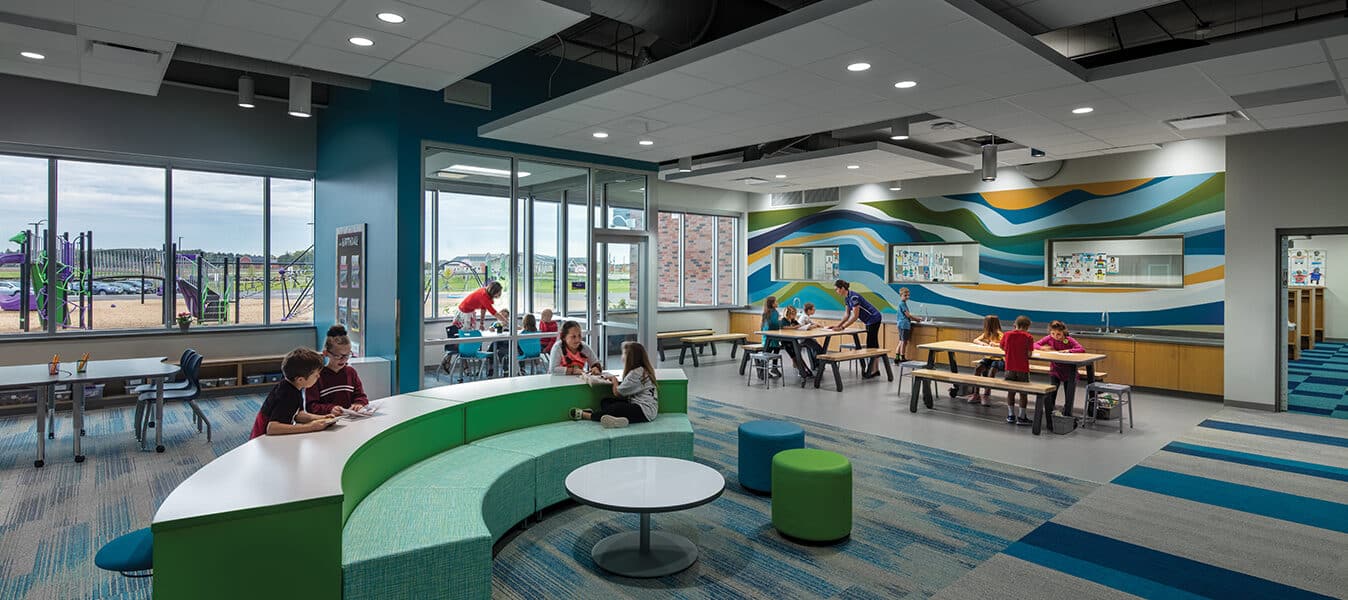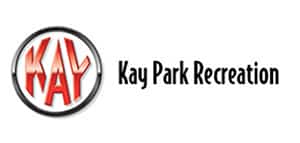In an era where “one size fits all” has become increasingly outdated, the design of K-12 schools is no exception. Gone are the days of rigid, single-purpose classrooms that merely serve as vessels for information delivery. Enter the age of flexible, multi-use learning spaces that foster creativity, collaboration and adaptability.
Adapting to the Dynamics of Modern Learning
Educators and students today recognize the importance of a multifaceted approach to learning. Classrooms must now be versatile, integrating technology, project-based instruction and emphasizing collaborative work.
They need to be able to flex in size and expand, allowing opportunities for larger group instruction, team teaching, and even hosting community events spaces after school hours.
Of course, this is all easier said than done. But there are best practices that lead to valuable and meaningful spaces that reflect today’s modern students, the way they learn and their community’s needs at large.
Here are some strategies my team and I have used to implement multi-use spaces successfully, along with some recent examples.
Make an Impact with Furniture
Successful multi-use spaces aren’t only about the floorplan but also their furniture. With movable furniture and adaptable layouts, flexible spaces can cater to various teaching styles and student needs. One moment, students might be in a circular discussion, and the next, they’re breaking into smaller groups for hands-on activities.
The furniture should support school time and after-school activities, be easy to move and get out of the way and be resilient enough for many uses. Being able to flex spaces with furniture allows versatility for schools and communities to leverage areas for maximum benefit.
Cater to Diverse Learning Styles
Not every student learns in the same way. While some might thrive in traditional lecture settings, others benefit from more interactive or individualized experiences. Multi-use learning spaces can quickly morph to accommodate these varied preferences.
For instance, a teacher can set up a corner of the room with soft seating for students who prefer a relaxed environment to read or reflect. Another section can be equipped with whiteboards and interactive displays for group projects.
Small group instruction (SGI) areas, while limited in size, have tremendous multi-use potential, including group gathering areas, teacher prep areas, and spaces for students to meet with specialists or to do focused independent work. With ample windows between the classrooms and SGIs, teachers supervise students from their classrooms.
Promote Collaboration and Community
Educational research continually underscores the benefits of collaborative learning. Students deepen their understanding of the subject matter and develop essential soft skills, such as communication, problem-solving and teamwork. Flexible learning environments naturally encourage these group activities with open layouts and reconfigurable furniture.
The impact of such spaces extends beyond the educational and into a school’s social and cultural fabric. Schools can shape their identity by transforming classrooms, hallways, courtyards and cafeterias into multi-functional learning environments.
One recently renovated high school features adjacent classrooms connected to a shared learning commons where students can spread out, work on larger-scale projects and tailor the space to fit their needs. The space doubles as a food service area where students can eat breakfast and lunch and gather after school.
The versatility of the space, complete with flexible furniture and audio-video technology, allows for a multitude of functions — academic, social and even civic. Staff and students can use the space for larger gatherings such as school assemblies and professional development workshops.
Located conveniently near the school’s entrance with the ability to restrict access to the rest of the building, the commons also invites participation from the broader community. Parents, local organizations, and the public can engage with the space for community meetings and fundraisers. This openness reinforces the school’s role as a community hub for learning, communal engagement and shared experiences.
Rethink Underused Spaces
Beyond pedagogical advantages, multi-use learning spaces are more efficient. Schools can save money and resources by utilizing spaces in multiple ways rather than building specialized rooms for each purpose.
Cafeterias rarely make good classrooms because they usually have poor acoustics and furniture unconducive to learning. Aside from lunchtime, they typically sit empty and underused for most of the day.
At one recent elementary school project, the administration wanted to create a cafeteria that could be used throughout the day. The solution was to rethink the concept of a single, large cafeteria and replace it with three smaller flex cafes that could be used for eating and function as multipurpose large group instruction rooms the rest of the day.
The flex cafes are conveniently located adjacent to classrooms, making them easily accessible to students and allowing teachers to maintain supervision. Each cafe is outfitted with furniture designed for learning and is tech-ready with multiple projection screens.
The finishes can stand up to messy uses like painting and science experiments and can easily be wiped clean. Ample storage allows staff to easily take out and put away their teaching materials for a wide range of lessons.
During the day, the cafes may host two or three classrooms of students coming together for a group lesson, a summer art camp or a district-wide professional development meeting. They can also be used for indoor recess or movie time. This fluidity maximizes every square foot, ensuring responsible use of the school’s resources.
Future-Ready Education
Part of preparing students for future success is instilling adaptability. Students, almost subconsciously, become accustomed to change by learning in constantly shifting and evolving spaces. They develop the tools to work and collaborate in different settings.
The physical environment of a school not only impacts students’ immediate educational experiences but plays a pivotal role in shaping their mental frameworks. A multi-use space subtly communicates the values of flexibility, resilience and innovation.
These spaces often integrate the latest technology, ensuring students are both future-ready in soft skills and tech-savvy. Immersed in such an environment daily, students internalize these values and carry them into higher education and the modern workplace.
By making our schools more flexible and functional, we’re not just addressing immediate academic needs; we’re laying the groundwork for a generation that views challenges as opportunities, is unafraid of change and possesses the mental agility to pivot in an ever-evolving world.
Chris Michaud, LEED AP, ALEP, is a senior design architect, principal and Accredited Learning Environment Planner at EUA, www.eua.com, an architecture, engineering and design firm. He has designed over 100 projects over his career, including many multi-use spaces for schools throughout Wisconsin.










